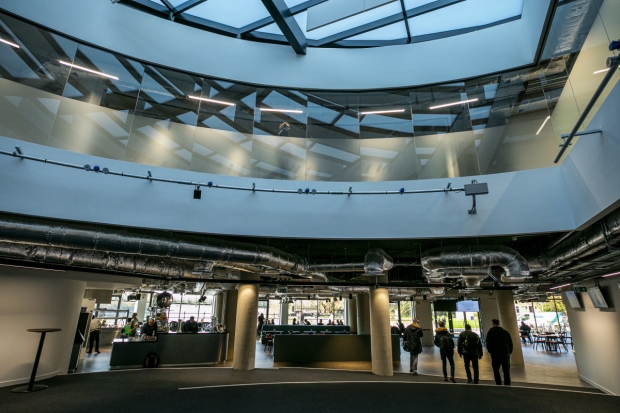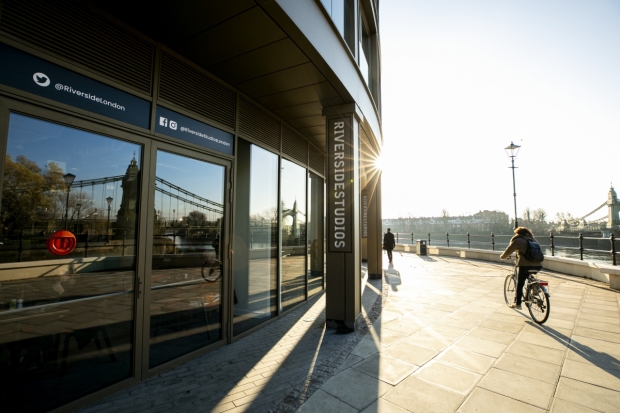Moving Riverside Studios into the digital age
The historic venue has undergone an incredible transformation

© Victor Frankowski
There are not many arts venues in London, or the UK as a whole, that are able to match Riverside Studios in terms of history or tradition. The space built a name for itself during the 1950s and '60s when the BBC acquired the old warehouse to make beloved television programmes like Z-Cars, Top of the Pops and Blue Peter. Shots of Daleks emerging from underwater in the second series of a little programme called Doctor Who were in fact filmed under the neighbouring Hammersmith bridge. Despite its original reputation being based in film and television, over time the venue expanded to curate art, music and theatre.
In 2014, Riverside closed its doors for much-needed renovation and William Burdett-Coutts, artistic director at Riverside since 1993, says that the venue has changed more in the last five years than at any other time in his tenure: "People loved the old Riverside – it was a ramshackle but comfortable building with a fantastic atmosphere. We were very sad to see it go but the building was past its sell-by date."
In its place is a state-of-the-art facility that boasts the most modern television studio in the country, two theatre spaces (500- and 200-seat capacity) and a further two cinema screens (208- and 48-seat capacity). This is in addition to Studio 8 café and bar, a coffee shop and Sam's Riverside, a high-end brasserie. Interestingly the new television studio was christened during Channel 4's election night coverage, with the entire 9pm to 6am programme going without a hitch. Talk about a baptism of fire.

© Victor Frankowski
The theatre spaces (known as Studios 2 and 3) are spectacular, designed with floating 'box in box' construction to offer complete sound isolation. Whereas in the past William "had directors wanting to kill me if there were two productions on at the same time", this architectural achievement should hopefully prevent his directorship from ending abruptly in the near future. Studios 2 and 3 are opening with performances of Love, Loss and Chianti and Persona on 25 February and 21 January respectively.
What is strongly detectable from walking around the space is how committed Riverside is to keeping its multidisciplinary traditions alive and executive director Guy Hornsby mentions the ample opportunity for "cross-pollination" between TV, cinema and theatre under the new roof. Perhaps the most exciting development in this new space however is Riverside's pledge to immerse itself in the digital age. The venue will be filming theatrical productions (including smaller shows) so that the public is able to enjoy recorded material at screenings or at home online. Digitally enabled performance areas will allow live work to be transmitted globally.

© Victor Frankowski
Furthermore, they have received a grant from the National Heritage Lottery Fund to digitise their archive and some of the material saved from the last 30 years sounds incredibly exciting. Recorded David Bowie performances that would have been sat collecting dust in a Stockwell warehouse will now be shown on digital channels. This commitment was key to the planning of Riverside's redevelopment, with William stressing the importance of keeping abreast with modern technology: "How to make the arts interesting to a younger generation using phones and tablets is critical – we want to attract new audiences."
As well as having one eye on future generations, this is a space for the here and now. Having moved the building back from the water's edge and constructed a walkway, the lobby is an area that ought to entice people in for a coffee and catch up with friends. The panoramic views of Hammersmith Bridge and the Thames are a good enough reason to stop, let alone the fantastic material being shown inside the studios and cinemas.
As William suggests: "The old Riverside was lost down a back alley – people viewed it as a secret garden. Now we have opened this up people go past it all the time. We are quite a unique building in terms of the mix of interests that happen here and they are very much built on the history of Riverside. The potential here is enormous"


















